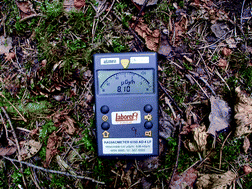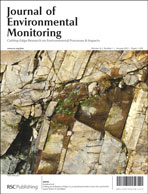Outdoor 220Rn, 222Rn and terrestrial gamma radiation levels: investigation study in the thorium rich Fen Complex, Norway
Abstract
The present study was done in the Fen Complex, a Norwegian area rich in naturally occurring radionuclides, especially in thorium (232Th). Measurement of radioactivity levels was conducted at the decommissioned iron (Fe) and niobium (Nb) mining sites (TENORM) as well as at the undisturbed wooded sites (NORM), all open for free public access. The soil activity concentrations of 232Th (3280–8395 Bq kg−1) were significantly higher than the world and the Norwegian average values and exceeded the Norwegian screening level (1000 Bq kg−1) for radioactive waste, while radium (226Ra) was present at slightly elevated levels (89–171 Bq kg−1). Terrestrial gamma dose rates were also elevated, ranging 2.6–4.4 μGy h−1. Based on long-term surveys, the air concentrations of thoron (220Rn) and radon (222Rn) reached 1786 and 82 Bq m−3, respectively. Seasonal variation in the outdoor gamma dose rates and Rn concentrations was confirmed. Correlation analyses showed a linear relationship between air radiation levels and the abundance of 232Th in soil. The annual outdoor effective radiation doses for humans (occupancy 5 h day−1) were estimated to be in the range of 3.0–7.7 mSv, comparable or higher than the total average (summarized indoor and outdoor) exposure dose for the Norwegian population (2.9 mSv year−1). On the basis of all obtained results, this Norwegian area should be considered as enhanced natural radiation area (ENRA).


 Please wait while we load your content...
Please wait while we load your content...